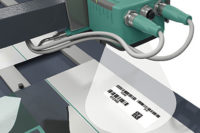Visualize a typist stationed at every point of data entry in a manufacturing facility. Imagine a data acquisition process that is automated, error free and very cost effective. Is it any wonder organizations in virtually every industry are adopting barcode technology? Using pictorial representations to relay information to a computer, scanners replace typists and enter data at the rate of 40 to 200 scans per second.
Before Barcodes
Analyzing the Situation
|
TECH TIPS
|
Beyond The Plant
The Next Step
Barcodes, Manufacturing and Metrology
Barcodes are becoming more common in manufacturing and assembly facilities. Surprisingly, these very facilities have not carried the technology through to the quality control department. This is not due to negligence, but rather an unfamiliarity of the potential to improve procedures.
There are three possible applications for barcode technology implemented in the inspection process.
|




